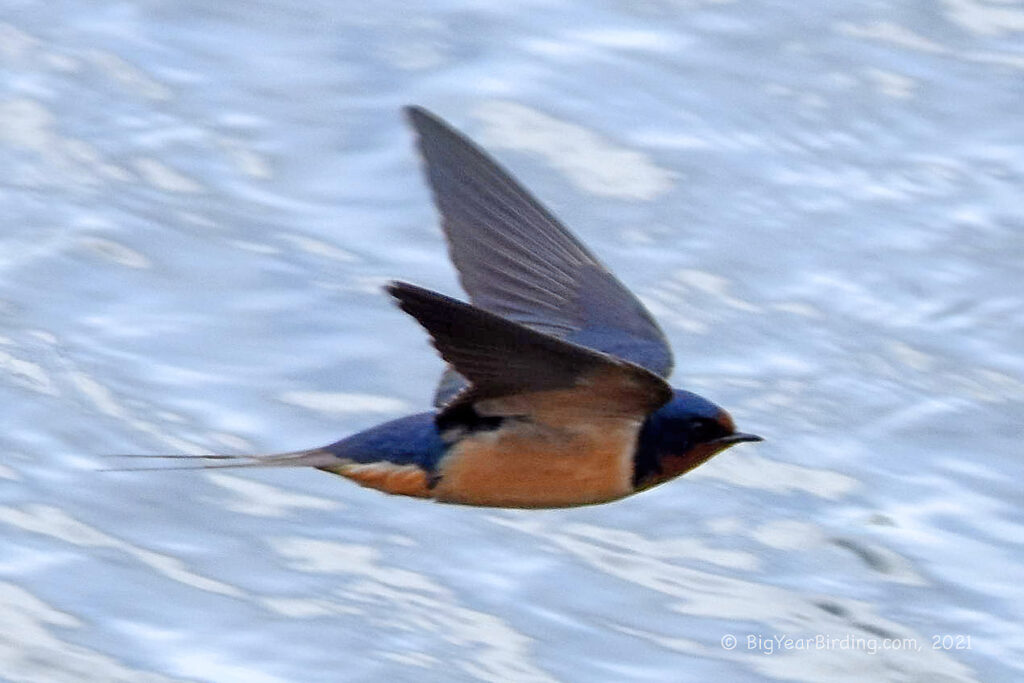
The Barn Swallow (Hirundo rustica) is a medium-sized passerine bird with a distinctive appearance. Adults typically have a wingspan of around 12 inches and weigh between 0.5 to 0.6 ounces. The body length ranges from 6.7 to 7.5 inches, and males tend to be slightly larger than females. These birds have a sleek, streamlined shape, with long wings and a deeply forked tail that gives them great maneuverability in flight.

One of the most distinguishing field marks of the Barn Swallow is its striking blue-black upperparts, which contrast sharply with its rusty-red throat and underparts. In addition to this coloration, the Barn Swallow also has a distinctive, deeply forked tail that helps it to steer and change direction quickly in flight. Its wings are pointed and narrow, and its bill is short and wide, adapted for catching insects on the wing. Juvenile Barn Swallows have a paler plumage, with buffy edges to their feathers, and a shorter, less deeply forked tail.
Barn Swallows are highly migratory birds, spending their winters in Central and South America, and their summers in North America, Europe, and Asia. During migration, they can cover up to 200 miles per day, and some individuals have been recorded flying over 7,000 miles in a single journey. In the spring, Barn Swallows return to their breeding grounds, often reusing the same nest site as the previous year. They are one of the earliest migratory birds to arrive in North America, with the first individuals typically appearing in late March or early April.
The Barn Swallow is a highly social bird, often nesting in large colonies that can number in the hundreds or even thousands of individuals. Their nests are made from mud, grass, and feathers, and are typically lined with softer materials such as feathers or animal hair. These nests are typically attached to the undersides of overhangs or other structures, and are built by both male and female Barn Swallows. They are devoted parents, with both parents taking turns incubating the eggs and caring for the young.

Barn Swallows are insectivorous birds, feeding on a variety of small flying insects such as flies, moths, and beetles. They are well adapted for catching prey on the wing, and are often seen swooping and diving in pursuit of their prey. Despite their small size, Barn Swallows are skilled and agile flyers, able to perform complex aerial maneuvers with ease. Their remarkable flight abilities, striking plumage, and sociable nature make them a popular bird to observe and study for birdwatchers and scientists alike.

